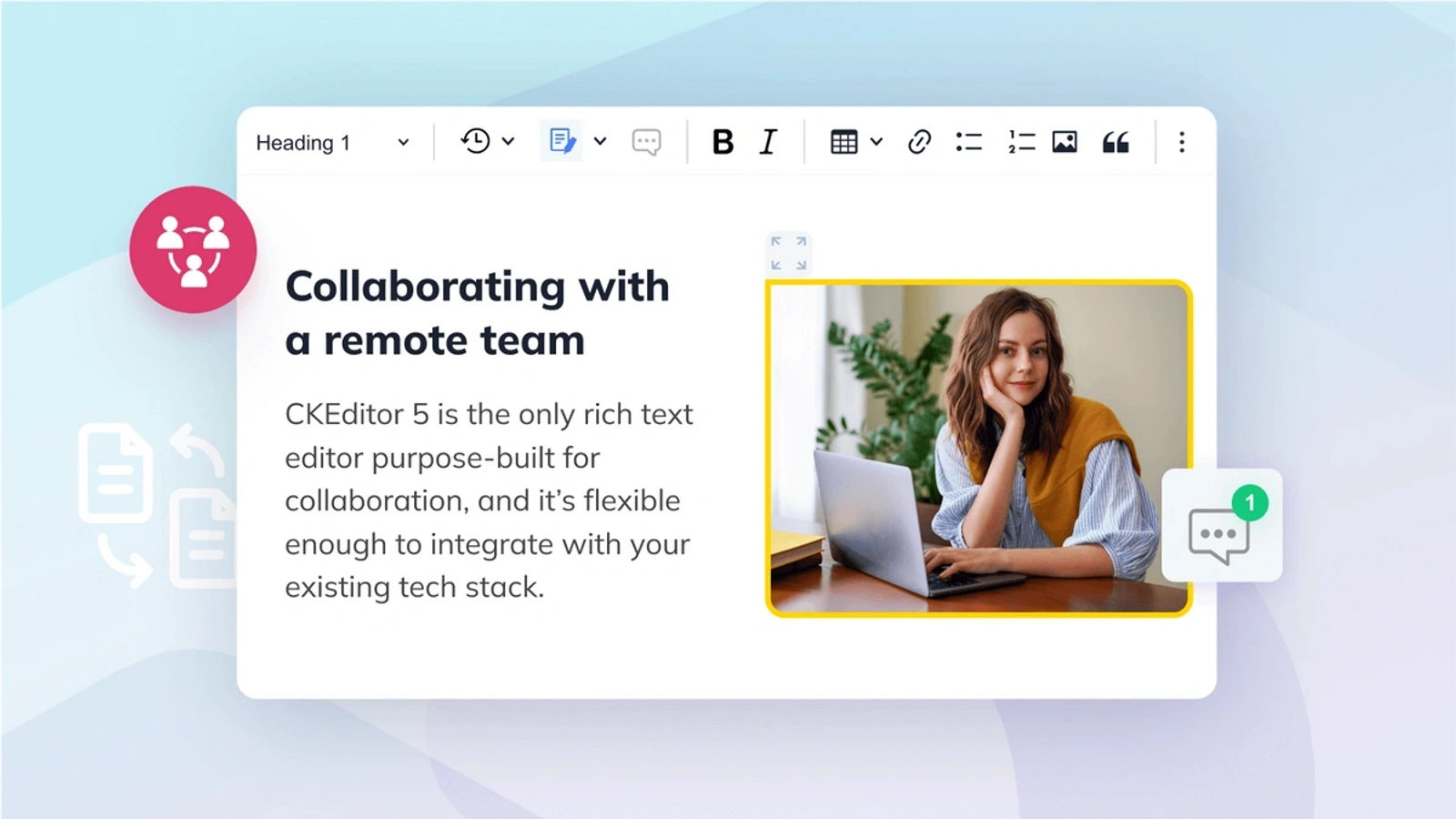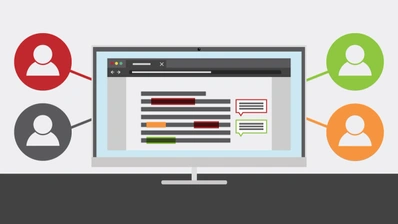How to get remote collaboration right

Many remote workers aren’t going anywhere – and not only because they’ve cut out their commute. While people have returned to the office, the prevalence of hybrid work arrangements means remote collaboration is now the norm for most businesses. But companies still struggle to get remote teams collaborating effectively. Here’s what you need to know to get it right.
Despite the obvious benefits for individuals, remote collaboration is still a fraught issue for many companies. Research has shown the effects of remote work on collaboration can be counterintuitive. Not only that, to get it right, companies need to find solutions to four major remote working challenges. First though, let’s cover the basics.
What is remote collaboration?
Remote collaboration is the most effective way to ensure work gets done in hybrid and remote teams. From Zoom meetings and instant messages to virtual whiteboards and task trackers, anything that lets you communicate or coordinate across different places and time zones is part of remote collaboration.
When you look at it that way, remote collaboration really is nothing new. Long before the internet or even the telephone, companies would send telegrams to communicate with branches overseas.
The difference today is in just how many people are working remotely. According to McKinsey, 58% of employees in the US work remotely in a hybrid or fully remote arrangement. And that’s not simply a holdover from the pandemic. In the US, telecommuting and remote work increased by 216% between 2005 and 2019 – the pandemic just accelerated a trend that was already on the rise.
With so many people out of the office and unlikely to return, remote work has morphed from an occasional administrative need into a crucial part of each team member’s job. But remote work and better collaboration don’t always go hand in hand.
The effects of remote work on collaboration
The positive benefits of remote work for employees are well known – less commute time, greater flexibility – so it’s no wonder 91% of remote workers view going remote as a good thing. Unfortunately though, if it’s not well managed, remote work can have a negative impact on collaboration.
When Microsoft looked at the effect of its mandatory work-from-home policy during 2020, the company found remote work caused a 25% drop in collaboration time across different teams. Amazingly, groups became more siloed and information wasn’t shared as widely as before. But on the positive side, existing teams became increasingly tightly interconnected as people interacted more with their immediate colleagues.
Remote communication can make collaboration harder
Unsurprisingly, Microsoft also found that real-time collaboration – including calls and video meetings – decreased, while asynchronous communication, like emails and instant messages, increased. But, researchers also now believe that the switch to these more flexible communication methods may have actually made it harder for people to share and process more complicated information – making collaboration more difficult.
Many organizations today are finding the same thing. In a 2023 survey by Buffer, 30% of remote workers said they still find remote collaboration to be a problem, meaning companies are still in search of solutions. Challenges to effective remote collaboration go beyond new communication dynamics – so let’s take a look at the four main issues.
4 major remote working challenges
Companies have to deal with a wide range of remote working challenges to ensure the benefits of remote work aren’t eclipsed by increased stress, confusion and inefficiencies. The good news is, there’s now a wealth of data out there to help categorize and resolve the major remote working challenges.
The four key factors to deal with are communication, collaboration, structure, and engagement.
1. Communication frequency
As Microsoft discovered from its research, remote work has a large impact on company-wide communication. While it can help teams become more tight-knit, this has to be balanced by encouraging more collaboration across teams and departments.
Important insights and breakthroughs often happen when people with different perspectives bounce ideas off each other – you don’t want to lose those serendipitous encounters when working remotely. Foster more diverse connections in the workplace by encouraging breakout sessions from larger meetings. Or use remote communication tools to your advantage by setting up random Slack chat groups or casual Zoom afternoon teas.
The goal is not to schedule more meetings, but to find a digital equivalent of the watercooler chat or chance lunchtime conversations that happen every day in a physical office.
2. Real-time vs asynchronous collaboration
It sounds counterintuitive, but remote collaboration is one of the biggest remote working challenges. When a team is separated by distance and time zones, the natural impulse is to rely more on asynchronous communication. While the shift away from real-time communication is inevitable for some tasks, it’s easy to fall into the trap of thinking that avoiding it is better (or easier).
We’ve all felt the frustration of an hour-long meeting that could’ve just been an email. But the opposite is true, too. Sometimes a 15-minute video call is the fastest, clearest way to present information, instead of a start-stop text chat that drags on for hours.
Face-to-face interactions, whether in-person or by video, help with focus and understanding. Buffer found that 62% of people prefer to have their camera on during video meetings, largely because seeing facial expressions makes communication easier.
For that reason, 36% of remote workers prefer an even split between asynchronous and real-time collaboration. So it’s important to ensure your digital workspaces – your CMS, CRM platform, project management software and more – are set up to handle both real-time and asynchronous collaboration.
3. Structure the collaboration
According to the Harvard Business Review, predictability is one of the most highly prized qualities in a workplace – and it’s too often ignored.
The shift away from real-time meetings and presentations to asynchronous collaboration means people have less regular structure to their workdays. Instead of weekly stand-ups with the team, colleagues working remotely are more likely to get messages at unexpected times of day (or night). Constant communication without a clear-cut end time can contribute to overwork and burnout.
To mitigate this, try to establish remote communication norms for your team to ensure a measure of consistency. Add shorthand like NNTR (no need to respond) to mark messages as less urgent, or set scheduled ‘quiet times’ when emails and texts are discouraged. Small changes like these make it easier for people to focus and plan their work.
4. Foster engagement
If issues around communication, collaboration and structure aren’t addressed, your team risks becoming disengaged. Given that 30% of remote workers say they’re not currently engaged with their jobs, it’s clear this is a common remote working challenge for many companies.
We’ve talked before about the three key tools for keeping people engaged, no matter whether your team is remote or in-office. Improving communication and participation are part of overcoming the challenges above, but people often forget about appreciation.
Focusing on appreciation can be as simple as making time to publicly congratulate someone for a job well done, or as complex as incorporating feedback loops into your business processes. The goal is to make sure team members feel valued and supported, even while working remotely.
How to make remote team collaboration work
When managed successfully, remote team collaboration can reduce stress, improve work-life balance, and boost retention. As more people come to expect flexibility from their workplaces, ensuring remote collaboration works for everybody is crucial to running your business.
Addressing the four major remote working challenges outlined above isn’t a step-by-step process. The most effective techniques take a more holistic approach.
For example, setting up regular cross-team knowledge sharing sessions boosts communication between teams, opens up space for real-time collaboration, and adds more structure to everyone’s schedule. Adding feedback loops into your processes brings structure, increases engagement and promotes collaboration.
Finding the right balance between real-time and asynchronous collaboration is also a critical piece of the puzzle. The platforms you use should be able to handle real-time and asynchronous ways of working, as the situation demands.
CKEditor 5 is the only rich text editor purpose-built for collaboration, and it’s flexible enough to integrate with your existing tech stack. To find out more about how CKEditor can make your systems more collaborative, contact us today.


